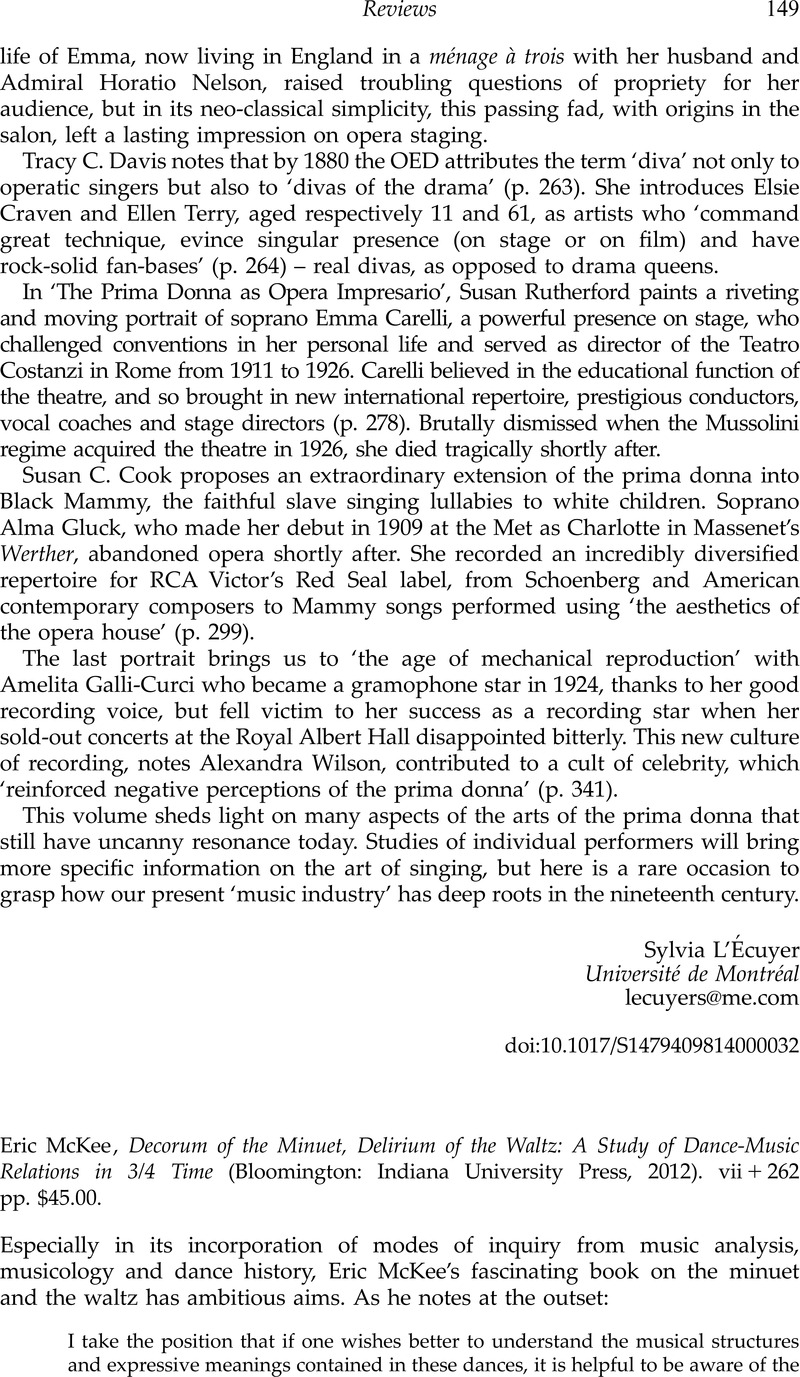No CrossRef data available.
Published online by Cambridge University Press: 01 April 2014

1 ‘The Influence of the Functional Minuet in the French Suites of J.S. Bach’, Music Analysis 18 (1999): 235–60; ‘Mozart in the Ballroom: Minuet-Trio Contrast and the Aristocracy in Self-Portrait’, Music Analysis 24 (2005): 383–434; ‘Dance and the Music of Chopin: The Waltz’, in The Age of Chopin: Interdisciplinary Inquiries, ed. Halina Goldberg (Bloomington: Indiana University Press, 2004): 106–61.
2 Lerdahl, Fred and Jackendoff, Ray, A Generative Theory of Tonal Music (Cambridge, MA: MIT Press, 1983)Google Scholar.
3 Caplin, William E., Classical Form: A Theory of Formal Functions for the Instrumental Music of Haydn, Mozart, and Beethoven (New York: Oxford University Press, 1998)Google Scholar.
4 Goldberg, Halina, Music in Chopin's Warsaw (New York: Oxford University Press, 2008)CrossRefGoogle Scholar.
5 Note that in the text below (and in McKee's book) published and unpublished refer only to Chopin's lifetime. Five of the waltzes that Chopin left unpublished were published with opus numbers in the decade following his death (opp. 69 and 70). Also note that McKee's listing of unpublished waltzes does not include the E-flat major Sostenuto, which has been claimed both as a mazurka and a waltz.
6 Hatten, Robert S., Interpreting Musical Gestures, Topics, and Tropes: Mozart, Beethoven, Schubert (Bloomington: Indiana University Press, 2004): 68Google Scholar.